Osor beyond the myth
History & Mythos
Human history is inseparably linked with myths. Throughout the millennia, myths have helped make the world understandable. Today, science takes over this task and assists us in explaining the world apart from myths and superstition, although legends are still an important source of research in archaeology.
Osor, Apsoros, Apsyrtides
Osor lies on the lowest isthmus, at the point of contact of a once integral island Cres and Lošinj, and is rightly regarded as its most important historical settlement. The origins of its name were once sought in the deep past and interpreted in various ways. One of the most attractive approaches was certainly the one associated with an event from Greek mythology. According to this, the settlement was named Apsoros (Apsoros), the island Apsyrtides (Apsýrtides Nêsoi) and the people Apsirtians or Apsyrtides. All the famous writers of antiquity recorded this terminology and interpreted it through the legend of the famous Greek sailors Argonauts from Colchis.
The legend tells of Jason from Jolkos in Thessaly and his band of heroes who travelled to Colchis on the ship Argo to fetch the “Golden Fleece” – a prophetic ram’s skin. In Colchis, Jason fell in love with the sorceress Medea, the daughter of the local king Aeetes. She used her magic to help him escape with the wondrous fleece and overcome the obstacles on his way back to Greece. Aeetes sent his son Absyrtos – who later caught up with the Argonauts on our island – in pursuit of the kidnappers. But his sister Medea lured him into an ambush, where Jason killed and ritually mutilated him. Thus the inhabitants of the island, the island itself and the city were named after the unfortunate murdered Absyrtos from Colchis.
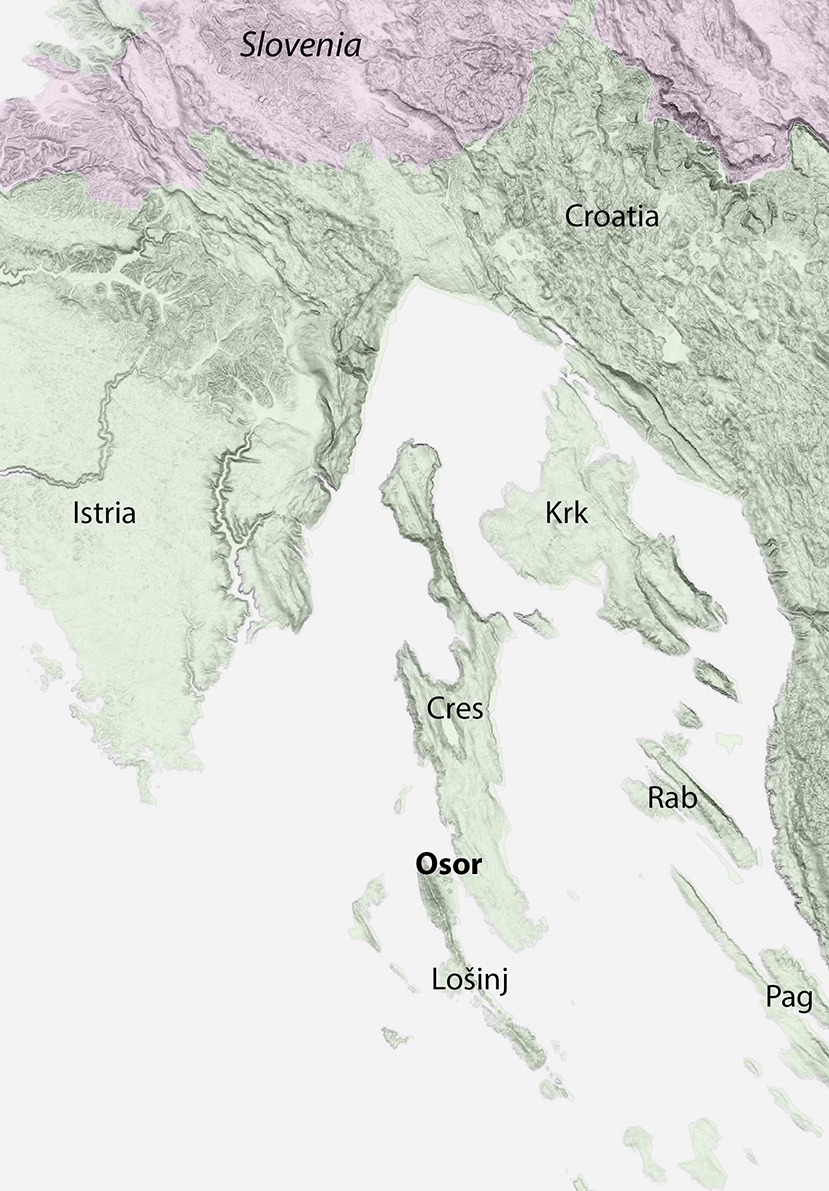

Location of the Kvarner Bay islands and the view of the Cres-Lošinj archipelago.
Osor Channel
It is a widely accepted theory that the Osor Channel is artificial and was already in use in Roman times. There is currently no evidence for its origin in the Iron Age, although this possibility is also frequently mentioned. As early as the 19th century, the idea emerged that the location of Osor was chosen for its strategic advantage and control of the narrow passage between Cres and Lošinj. By opening a channel between the two islands, ships travelling on the route between North Adriatic and the Mediterranean could navigate to the town. At the same time, control of the channel also enabled a certain degree of control over these long-distance shipping routes.
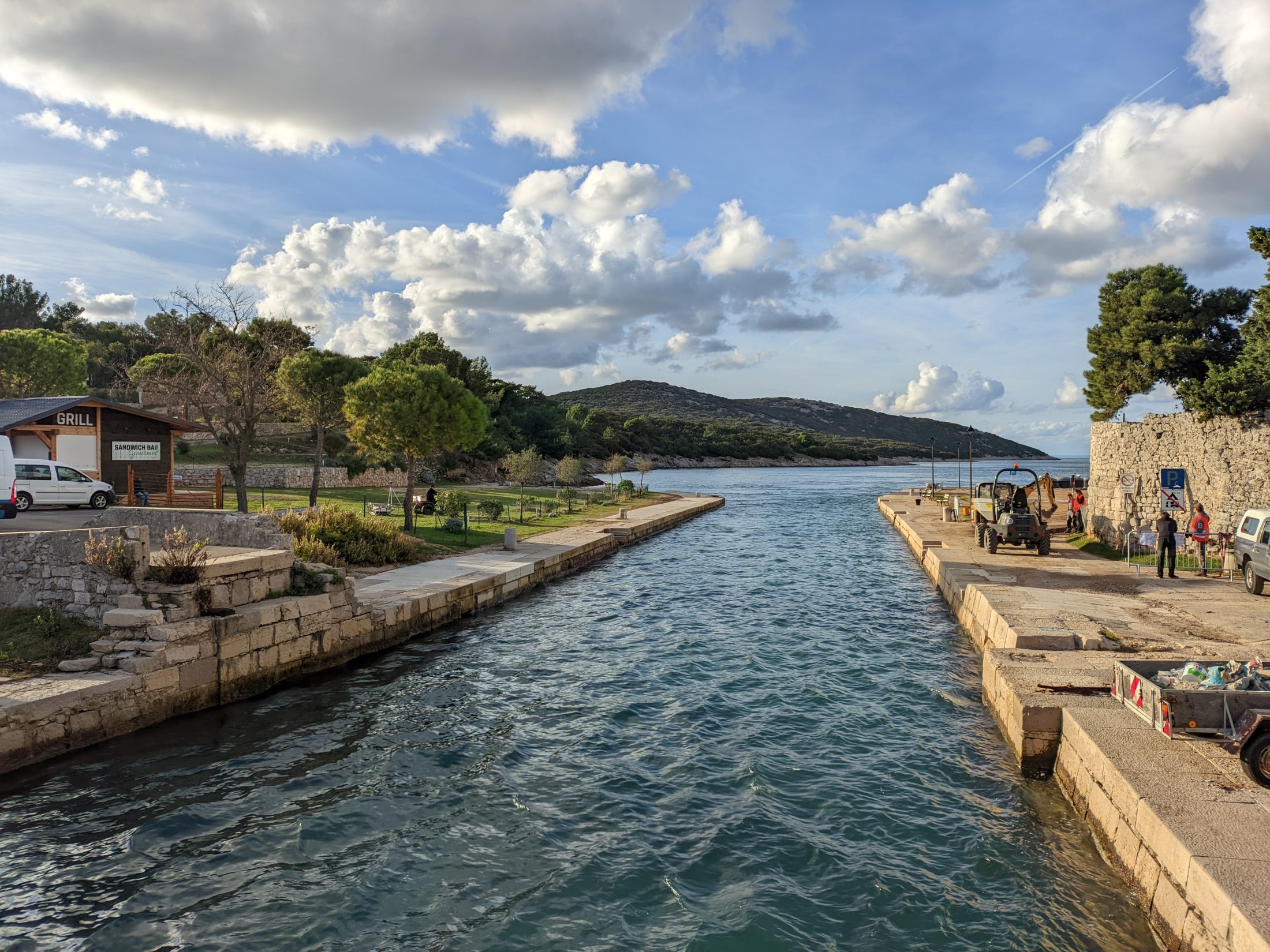
Osor Channel (Croatian: Osorski kanal, Kavanela) is today only about 12 metres wide and 2-3 m deep.
Bronze and Iron Age
The present archaeological data indicate that Osor was inhabited already in the Late Bronze Age. Grave ensembles and settlement finds demonstrate the long-distance trade contacts already in that period. The amount of imported luxurious grave goods such as amber or glass beads, attire and metal vessels in the Iron Age (10th-2nd century BCE) indicates that the creation of the social elite is progressing with time. The careful analysis and interpretation of the existing objects directly and intensively addresses the extraordinary range of cultural contacts of that time, primarily from the Alpine and Italic area, then the influx from the Greek-Macedonian milieu and finally those from the Celtic cultural area of the Central European Iron Age. As a result, their background reveals many complex social and economic practices.

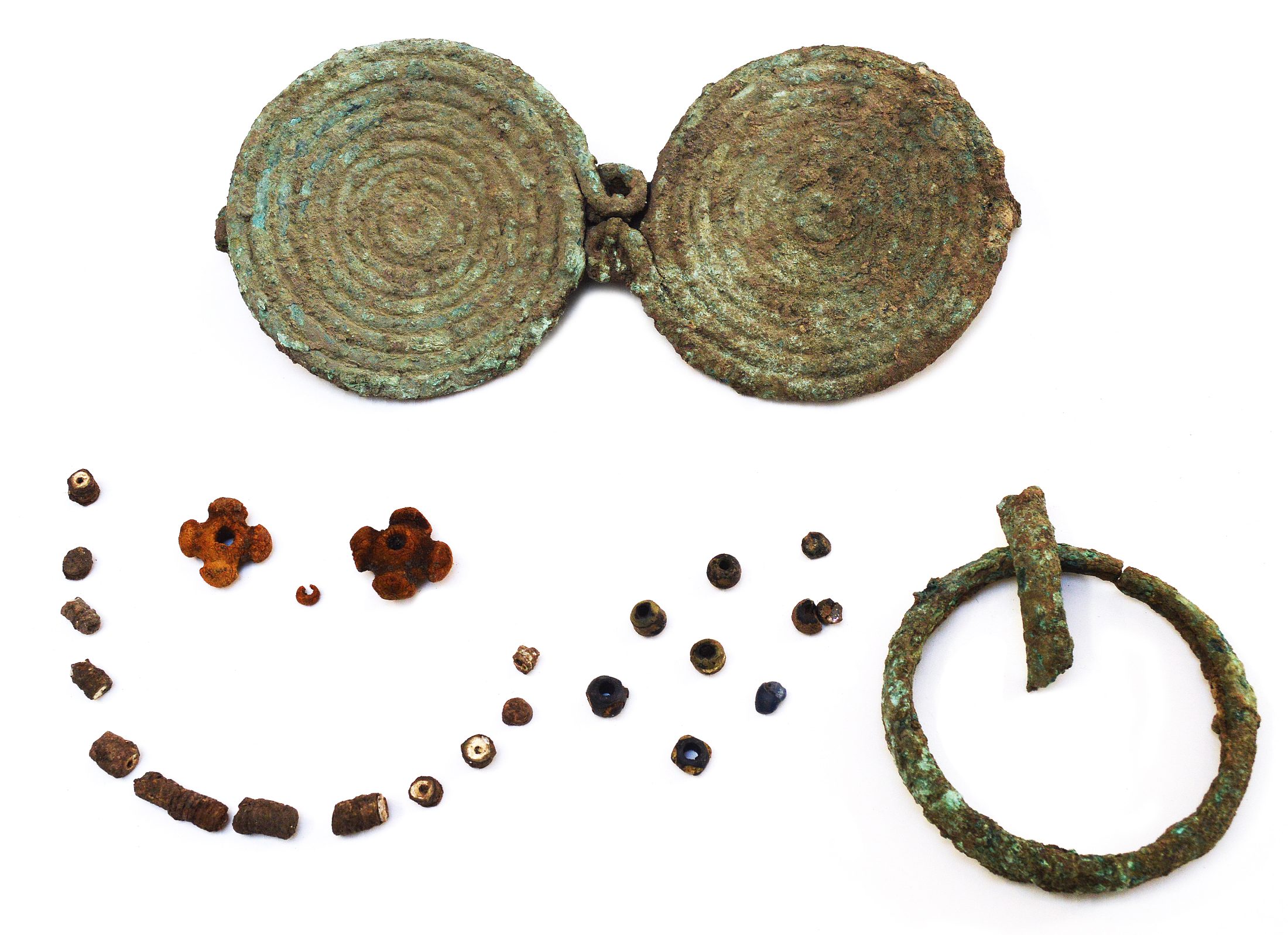
Fragments of a bronze situla and cyst, spectacle fibula, bracelets and beads made of amber, bone and glass from Iron Age graves in Osor.
Osor certainly had a genuine proto-urban character. It participated in the shaping and filtering of economic and cultural trends. The central settlement of the archipelago became an unavoidable traffic centre in the northern Adriatic, overseeing one of the vital connections between northern and central Europe to the Mediterranean. Osor is thus the centre – surrounded by the sea, girdled with strong, so-called “cyclopean” walls.
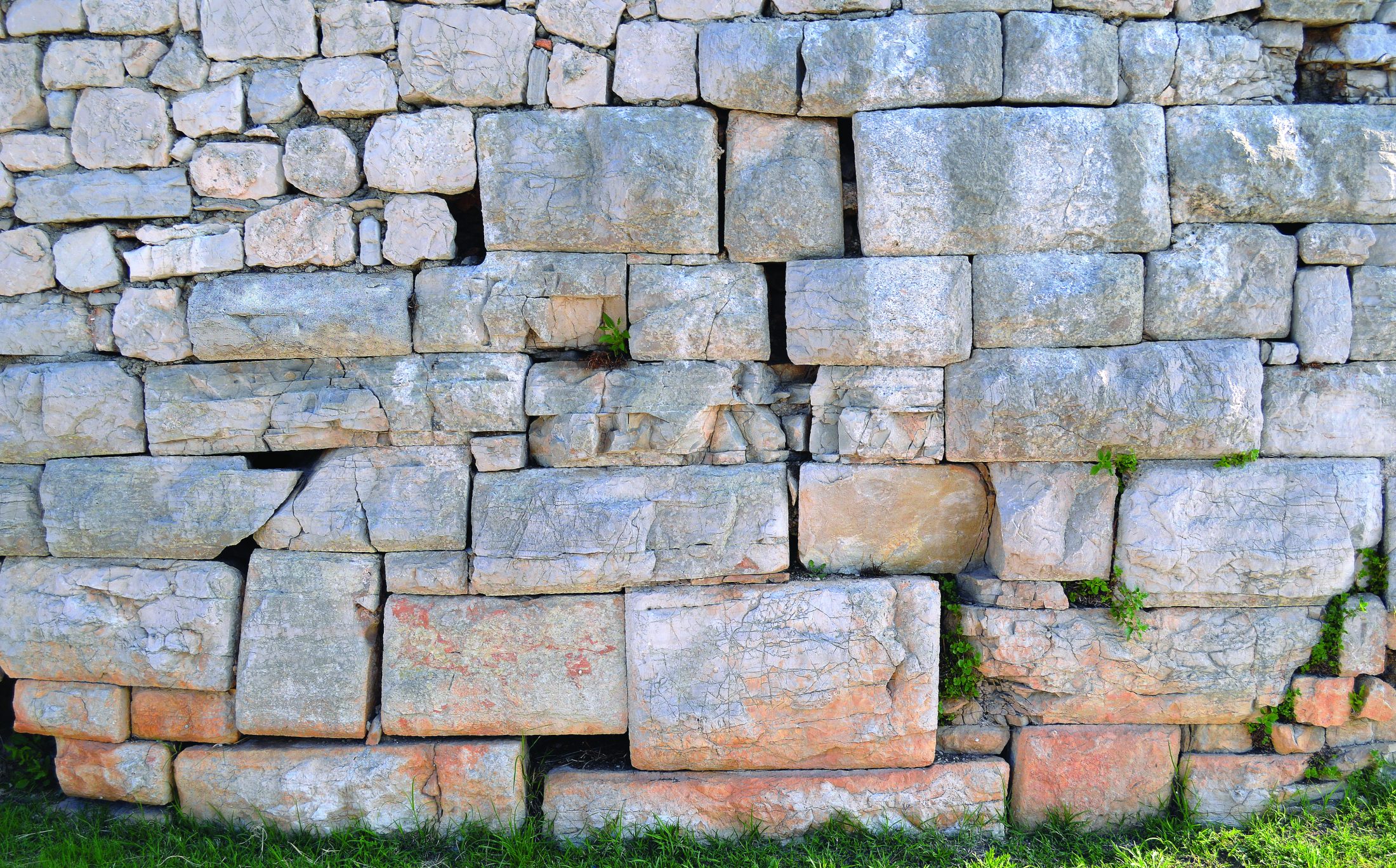
Parts of the Iron Age fortifications have been preserved to this day, in particular those which were integrated into the Roman/Late Antiquity city walls.
Roman times
The arrival of the Romans in the 2nd century BCE undoubtedly marked the beginning of a completely new era for Osor. Together with other areas of Kvarner, Osor boldly crossed the threshold of history and began another extremely rich epoch of its splendid past. The material culture shows that Osor played an important role in the process of Romanisation of the northern Adriatic. During Roman rule, Osor was granted the status of a municipium and developed into an Roman city.
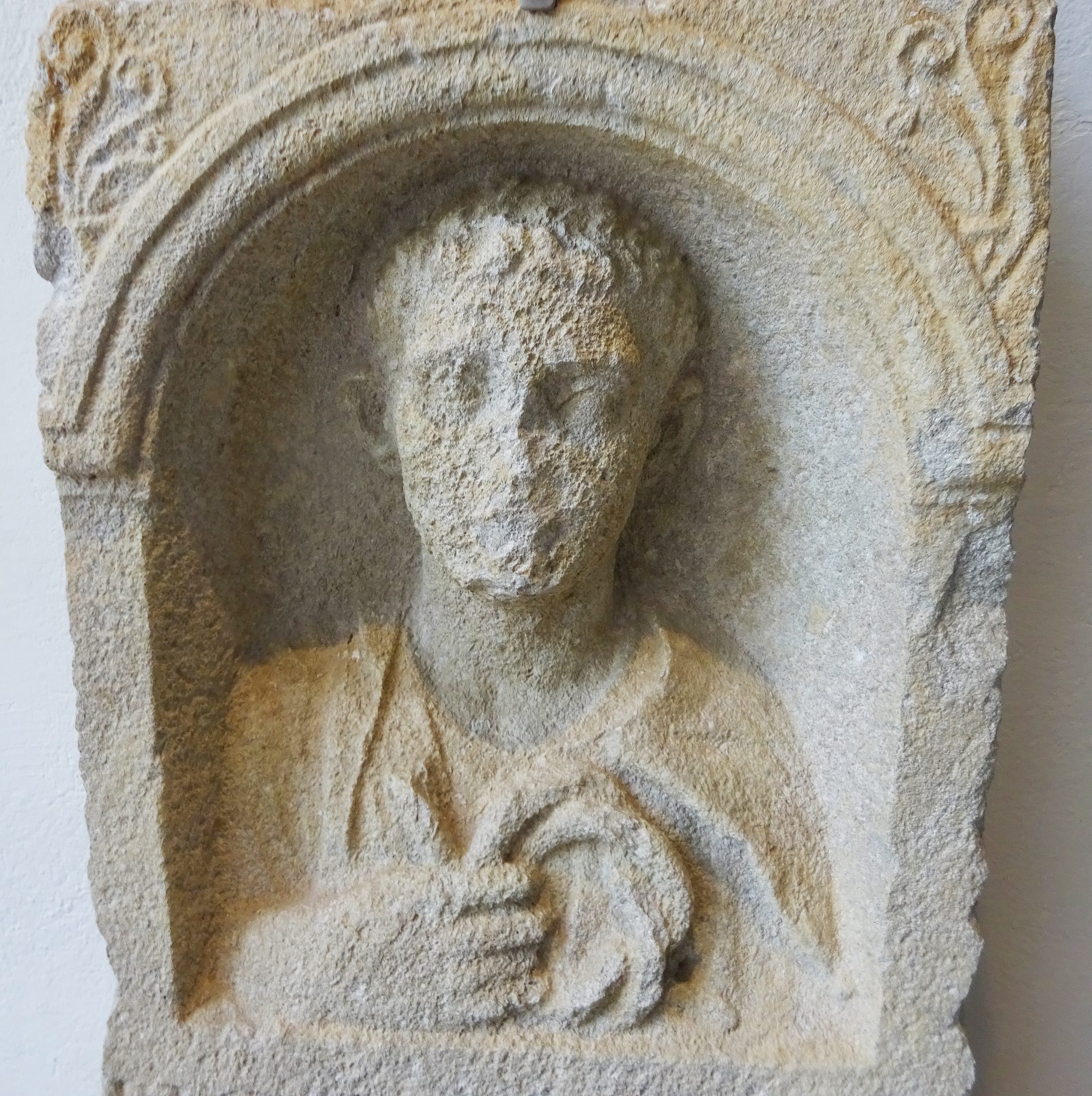

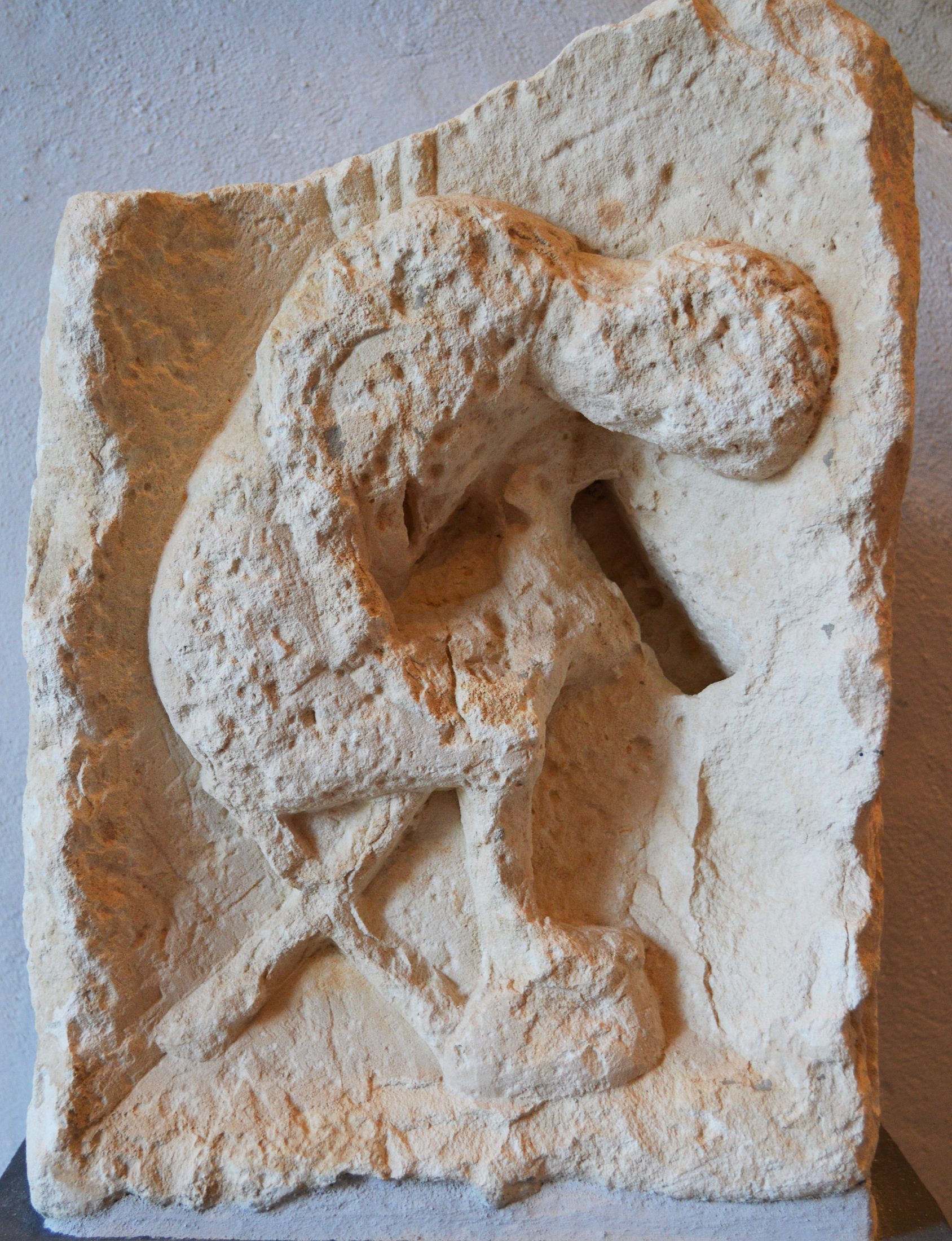
Roman provincial sculpture (imperial portrait and tomb stelae).
Late Antiquity and Middle Ages
The rise of Christianity and the emergence of new sacral architecture in Late Antiquity played a significant role in the city and strengthened in this way its regional importance into the Middle Ages. The oldest known monument from Late Antiquity is located next to the church of St Mary in the cemetery, where the first Christian monuments were erected on the foundations of the Roman town buildings.
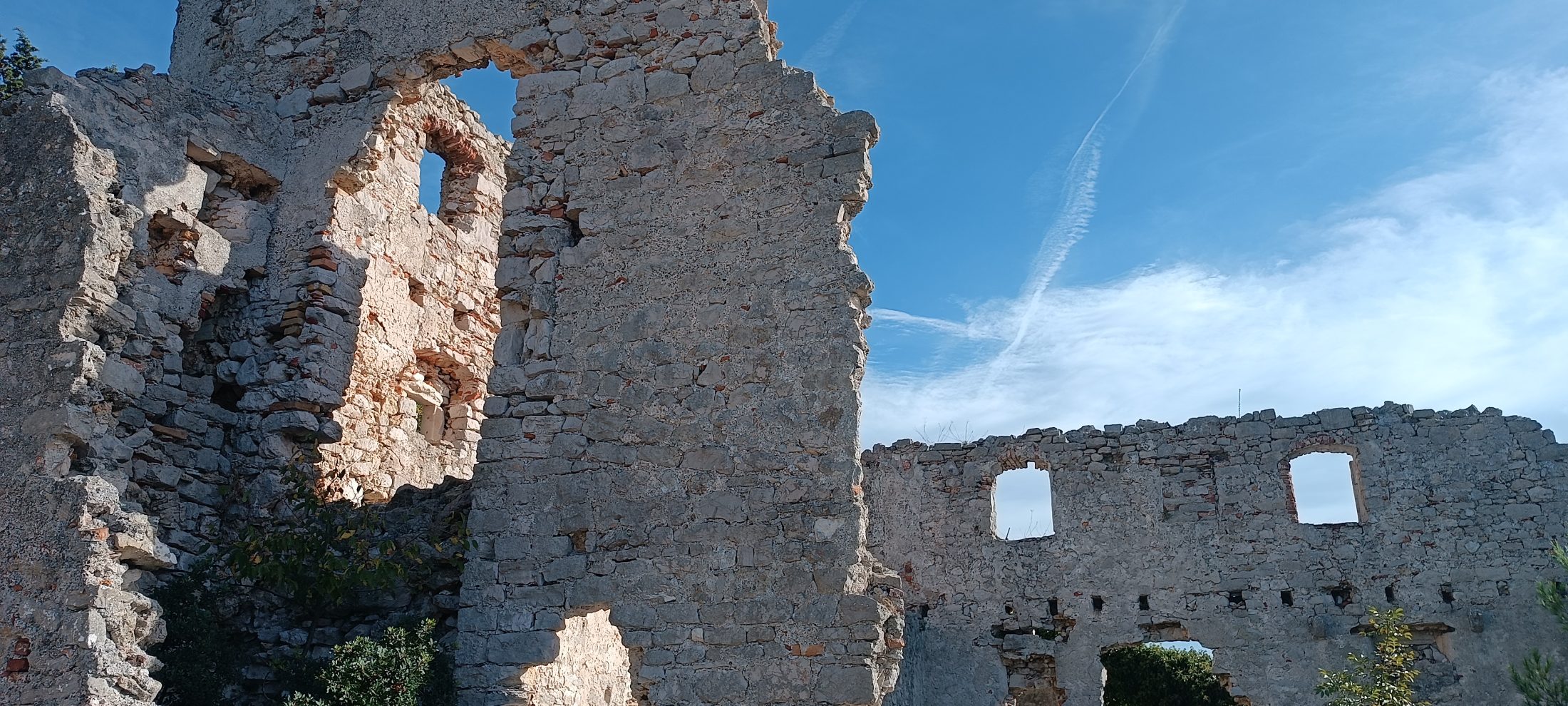
The Franciscan monastery in Bijar Bay (15th-18th century) is only one of several historic monasteries in Osor that have shaped the city’s history for centuries.
Decline of the city
The decline of the city only began during Venetian domination, which is clearly evident from the 16th century, when the circular layout of the city walls was modified. While the western half of the city remained populated, the eastern half was abandoned. This is a clear sign of the population decline – a process that continues to this day. Many reasons have contributed to the decline of the city, among them the fact that the Osor Channel was barely navigable for large Venetian ships due to natural sedimentation processes and lack of maintenance. Today, Osor only has around 30 inhabitants.
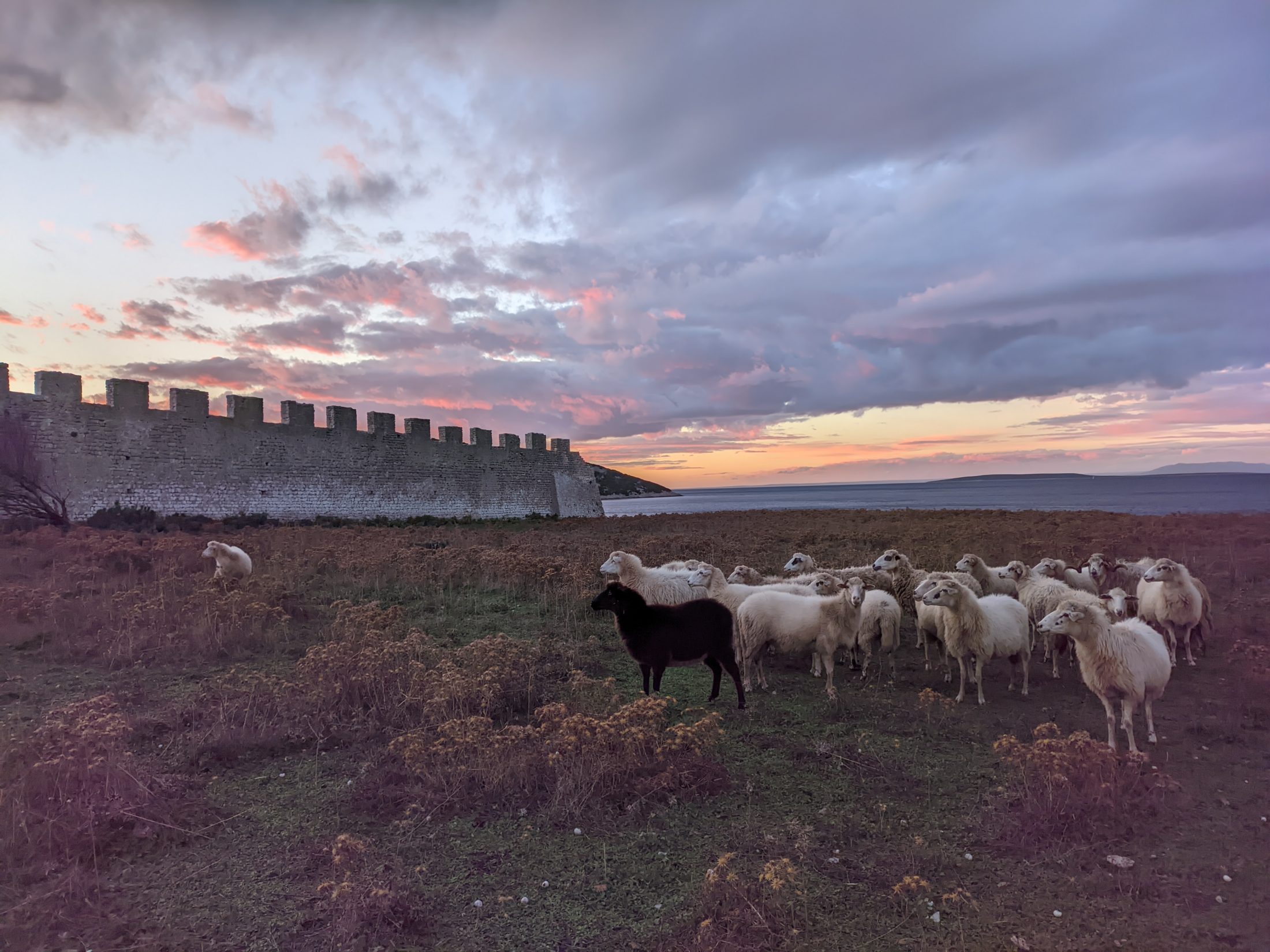
Nowadays, the part of the town not inhabited since the 16th century is used as pasture for a small herd of sheep.
Selected publications
Benndorf O. (1880), Ausgrabungen in Ossero, Archaeologisch-epigraphische Mittheilungen aus Österreich 4, 1880, 73–82.
Burton, R. (1877), Scoperte antropologiche in Ossero. Archeografo Triestino, II/V, 129–134.
Ćus-Rukonić J. (1984), Izvori za arheologiju Cresa i Lošinja. Otočki ljetopis Cres-Lošinj 5, 229–242.
Ćus-Rukonić J., Glogović, D. (1989), Pregled nalaza i nalazišta brončanoga doba na otocima Cresu i Lošinju. Arheološki vestnik 39–40, 495–508.
Ćus-Rukonić J., Čaušević -Bully M. (2008), La topographie archeologique d’Osor de l’antiquite au
haut Moyen âge. Histria Antiqua 16, 253–270.
Čaušević M. (2003), Sainte-Marie du cimetière d’Osor. État de la question et résultats des dernières fouilles. Hortus Artium Medievalium 9, 2003, 205–212.
Čaušević-Bully M., Marić I., Bully S., Jurković M., Dugorepec L., Blečić Kavur M. (2017), Le monastère Saint-Pierre d’Osor (île de Cres): onzième campagne d’études archéologiques. Hortus Artium Medievalium 23 (2), 797–808. DOI: 10.1484/J.HAM.5.113763
Čučković Z. (2017), Claiming the sea: Bronze Age fortified sites of the north-eastern Adriatic Sea (Cres and Lošinj islands, Croatia), World Archaeology 49:4, 526-546, DOI: 10.1080/00438243.2017.1341331
Faber A. (1980), Osor-Apsorus iz aspekta antičkog pomorstva. Diadora 9, 1980, 289–317.
Faber A. (1982), Počeci urbanizacije na otocima sjevernog Kvarnera, Arheološka topografija Osora. Izdanja Hrvatskog arheološkog društva 7, 61–78.
Fortis A. (1771), Saggio d’osservazioni sopra l’isola di Cherso ed Ossero. Venezia.
Fučić B. (1990), Apsirtides. Mali Lošinj.
Glogović D. (1982), Predmeti starijeg željeznog doba iz grobova na Kavaneli kraj Osora. Izdanja Hrvatskog arheološkog društva 7, 33–42.
Glogović D. (1989), Prilozi poznavanju željeznog doba na Sjevernom Jadranu, Hrvatsko primorje i Kvarnerski otoci. Monografije JAZU, Zavod za arheologiju 1, Zagreb.
Gović V. (ed.) (2011), Punta Križa. Mali Lošinj.
Katičić R. (1995), Illyricum Mythologicum. Zagreb.
Imamović E. (1979), Povijesno arheološki vodič po Osoru. Sarajevo.
Klodič A. R. (1885), Die Ausgrabungen auf Ossero. Mittheilungen der KK–Central Kommission XI, I–VII.
Marchesetti C. (1924), Isole del Quarnero. Regione X. Notizie degli Scavi di Antichità, Fasc. 4/5/6, 121–148.
Marić I., Bully S., Jurković M., Čaušević-Bully M. (2010), Le monastère Saint-Pierre d’Osor (île de Cres): quatrième campagne d’études archéologiques. Hortus Artium Medievalium 16, 277–292.
Matijašić R. (1984), Neobjavljeni antički materijal s otoka Cresa i Lošinja u Arheološkom muzeju Istre u Puli, Otočki ljetopis Cres – Lošinj 5, 51–64.
Mihovilić K. (2002), Grčki i helenistički nalazi u Istri i Kvarneru. In N. Cambi, S. Čače, B. Kirigin (eds.), Greek influence along the East Adriatic coast, Proceedings of the International Conference held in Split, 499–520.
Mihovilić K. (2012–2013), Koštani predmet iz Osora u zbirci Arheološkog muzeja Istre. Diadora 26/27, 213–224.
Mladin J. (1960), Iskapanje ilirskog tumula u Osoru na otoku Cresu. Jadranski Zbornik 4, 211–240.
Mohorovičić A. (1953), Pregled i analiza novootkrivenih objekata historijske arhitekture na području grada Osora. Bulletin Razreda za likovne umjetnosti Jugoslavenske akademije znanosti i umjetnosti 1-2, 10–16.
Mohorovičić A. (1956), Apsyrtides – Apsorus. Buletin Zavoda za likovne umjetnosti JAZU 9–10, 4–11.
Nowotny E., Sticotti P. (1896), Aus Liburnien und Istrien. Archeaologisch-epigraphische Mittheilungen aus Österreich–Ungarn XIX, 159–180.
Sacken von E. (1879), Neuere Erwerbungen der Antikensammlung des A. H. Kaiserhauses: Von Ossero auf der Insel Cherso. Archeaologisch-epigraphische Mittheilungen aus Österreich IIII, 150.
Stražičić N. (1981), Otok Cres. Prilog poznavanju geografije naših otoka. Mali Lošinj: Otočki ljetopis Cres-Lošinj 4.
Sušanj Protić T. (2015), The Urban Layout of Osor after 1450. Ars Adriatica 5, 95–114. DOI: 10.15291/ars.931
Šašel Kos M. (2017), Bilješka o mornaričkom centurionu Likeju iz Apsora. / A note on a naval centurion Liccaeus from Apsorus. Miscellanea Hadriatica et Mediterranea 3 (1), 111–124. DOI: 10.15291/misc.1353
Težak-Gregl T. (1982), Rimske provincijalne fibule iz arheološke zbirke u Osoru. Izdanja Hrvatskog arheološkog društva 7, 99–110.
